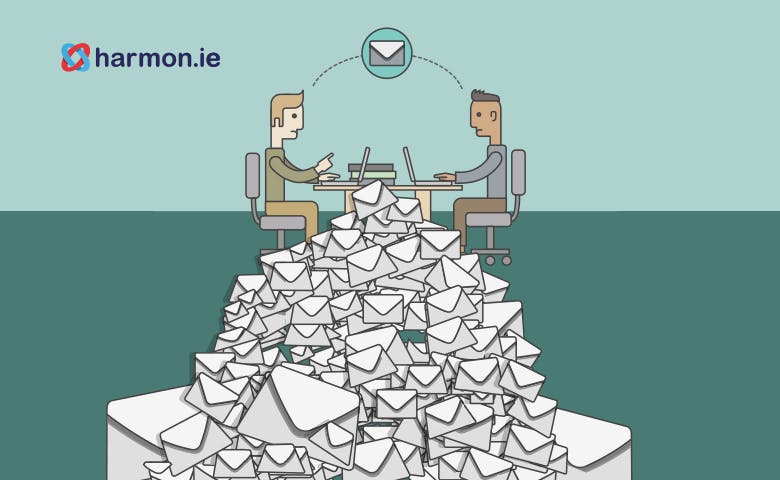Figuring out how to deal with information overload is a problem that’s becoming ever more common to 21st century workers. If you spend hours every day trying to filter out marketing emails, skim-reading project status updates and receiving notifications from your organization’s instant chat app, you’re probably already familiar with the symptoms of information overload:
- You spend hours hunting through different platforms just to find basic information to get your job done
- You struggle to connect the dots between information held in different environments
- You feel constantly distracted by new notifications
All this distraction and confusion is highly damaging. Various estimates place the cost of information overload to the US economy as high as $1 trillion annually, with workers wasting as much as 25% of their time dealing with ever-growing data streams coming from the apps and platforms they use for everyday tasks.
Whether you like it or not, the abundance of workplace apps is here to stay, and workers depend on them more than ever. Your best option, then, is to adapt—to find ways to deal with and avoid information overload.
5 tips: how to deal with information overload
1. Use inbox rules to classify emails you receive
Your first step for dealing with information overload is to begin classifying information that arrives in your inbox. For instance, Microsoft Outlook rules can be applied to your inbox which will automatically filter emails from certain senders or with specific words or terms in the subject line into separate folders. By applying these kinds of rules, you move the most important messages to separate folders, making it much easier to find them later.
2. Set aside time to review information
A great way to manage information overload is to set aside a specific time in the day for reviewing all the new information you have received in the last 24 hours. Block out 30 minutes each day to review emails, project reports and SharePoint documents. Rather than toggling between different platforms all day to keep up to date with what’s happening, you should try and get as much of your ‘information reviewing’ done in one single block, then spend the rest of your day on ‘real’ work.
3. Focus on one thing at a time
Learning how to deal with information overload is, in many ways, about self-control. You need to be able to manage yourself and avoid the temptation to get distracted by all the activity in your social feeds, your inbox and your collaboration platforms. If you’re writing up a long report, it can be tempting to quickly respond to an email which just landed in your inbox. However, unless it’s urgent, this is a bad idea. One study found it can take up to 25 minutes to regain your focus after being distracted. Therefore, you should do your utmost to do one task at a time. As we’ve written about before, you need to avoid context switching in the workplace.
4. Turn off personal distractions
While it’s not reasonable to turn off email notifications at work (your boss might not be so impressed), it does make a lot of sense to turn off any distractions from your personal life. Simply placing your smartphone at the bottom of your bag while you’re at your desk will significantly reduce the temptation to send texts or check your personal inbox every five minutes.
5. Monitor how you spend your time at work
Over the course of one week, keep an hourly diary of what activities you have been doing, and how much time you spend on them. By monitoring the time you really spend on your different tasks—from reading emails to writing reports to checking up on your teams’ work—you can work out where you are wasting time and then reorganize your day to become more efficient and productive.
harmon.ie helps you deal with information overload
The steps outlined above offer a solution to individual employees who are struggling with too much information. However, if information overload is common right across your organization, a more unified approach is required.
harmon.ie provides your employees with an effective way of dealing with the deluge of information, notifications and updates from across the apps and tools they use. harmon.ie appears as a sidebar in your colleagues’ Outlook inbox, and it uses Artificial Intelligence technologies, like Natural Language Processing and Machine Learning, to surface content from all the different apps and platforms your organization uses. As a result, the user receives highly relevant additional information in context – without having to navigate between multiple apps to find the information they need.
For example, if a newly-employed customer service representative receives an email from a client about a query which was originally dealt with by their predecessor, harmon.ie is able surface all relevant information from other apps and platforms in context. This could include emails stored in Exchange, documents stored in Outlook, or tasks from Planner. As a result, the customer service rep can quickly access all information related to the customer and answer their query fast. This saves employees from endlessly sifting through documents and messages, allowing a boost in productivity right across the organization.
To learn more about how to deal with information overload, read more today or get in touch with harmon.ie.

